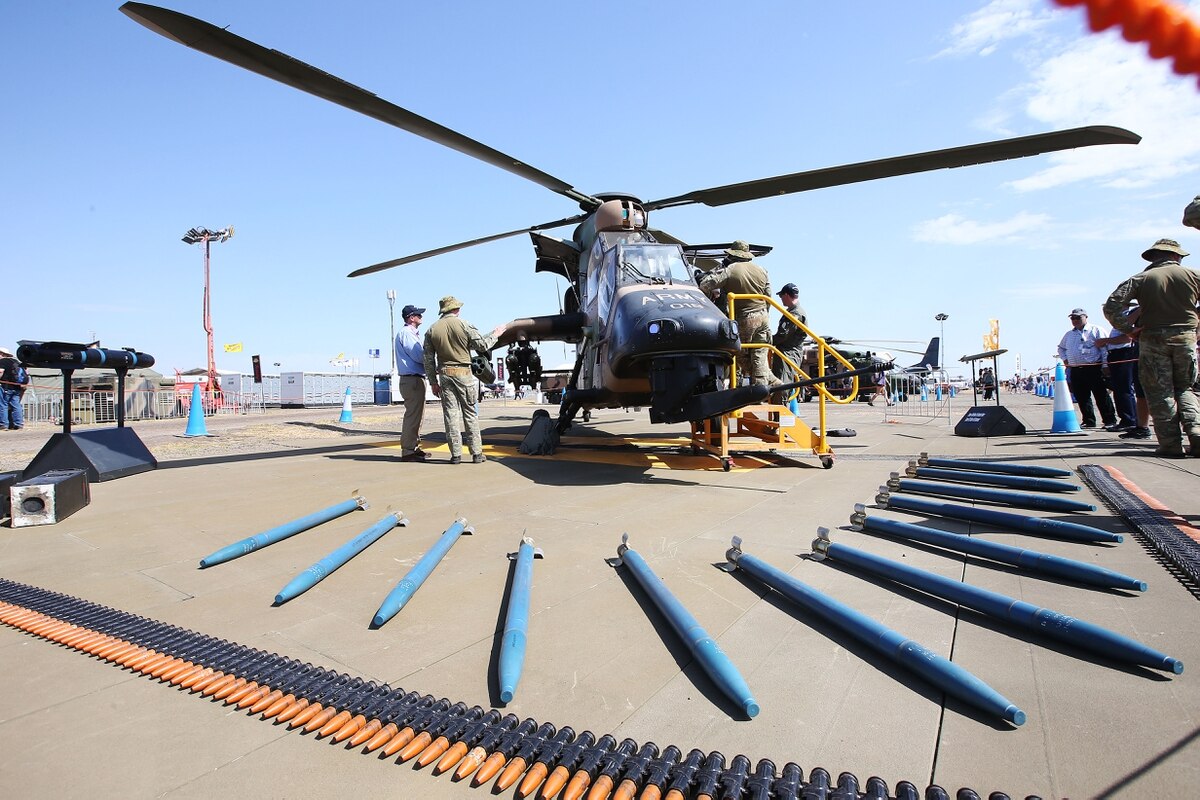The Australian ARH Replacement Program: Conclusions
The Australian Department of Defence has indicated several times over the past few years, both in public statements and private ones, that they intend to replace their NH-90s and their Tigers.
A key reason why this is so is the sustainment and ops costs of the fleet.
As Marcus Hellyer put it in a recent piece:
“The business-as-usual approach can also be seen in Defence’s management of underperforming helicopters. After stating for many years that it would make the Tiger armed reconnaissance helicopter work, and then telling parliament it was working,
Defence appears to have lost patience with the aircraft due to its high cost and low availability…. The sunk-cost fallacy has also kept Defence from replacing another chronic underperformer, the MRH-90 utility helicopter. Incredibly, it’s Defence’s fourth most expensive capability to sustain. Between the two, Defence is spending $460 million this year to sustain them.”
Hellyer’s own recommendation is not to replace these helicopters but to move on to the unmanned options. “Rushing to replace it with another manned helicopter is a high-risk move in the light of the vulnerabilities inherent in helicopters.”
I will turn to that assertion later in this article.
The Tiger Option
The Tiger in the Australian Army has had a tough history. Clearly, many of the challenges which the Tiger faced early on have been dealt with to provide a decent operational armed reconnaissance helicopter.
The Tiger has had similar challenges in the European forces using the Tiger, but as my colleague Murielle Delaporte, has highlighted both in her French defense magazine and in her travel with the French forces in Africa, Afghanistan and the Middle East, the Tiger has become a key member of the French combat forces.
We have published a number of articles on Tiger over the years in operations, and over the past decade, the French have gained more experience with the aircraft, and it has proven to be a significant upgrade over the Gazelle, for example, and is a key part of any assault or ground maneuver force which the French army operates in combat.
To date, 185 Tigers have been produced for France, Germany, Spain and Australia. Three versions of the helicopter were initially identified to be built around a common airframe: HAP (Hélicoptère d’appui et protection), HAC (Hélicoptère anti Char) for France and the PAH2 (Panzerabwehrhubschrauber 2).
In Europe, the TIGER program is managed by European intergovernmental organisation OCCAR (Organisation Conjointe de Coopération en matière d’ARmement, “Organisation for Joint Armament Cooperation”). The prime contractor of the program is Airbus Helicopters.
The relatively low numbers of the aircraft, plus the diversity of users poses challenges for a non-European customer such as Australia. But certainly, the French military are extremely competent users of the aircraft and have a close working relationship with Australia, a relationship which we have personally witnessed in both Australia and in France.
The Apache Option
The advantage of Apache for the Australian Army is the very significant numbers of Apaches in use and the global user base. And Australia can work directly with the United States and Boeing to shape their options from a common pool of deployed capabilities.
Also, Boeing Australia has a significant presence in Australia and is working with the ADF on a number of key programs, including the P-8, the Wedgetail, the new loyal wingman program, the C-17 and the Chinook medium lift helicopters.
These capabilities, numbers, global user base, shared investments in a much larger force than Tiger, and significant Australian presence all provide an alternative to the Tiger, beyond the question of the platform itself compared to the Apache.
These are largely like to like choices, but if the Australian Army is looking for a fully sourced and supported global partner, this may well be an alternative attractive to the Australian Army. But this will provide capabilities for missions similar to how the Australian Army has done business in the Middle East projected into its future regional roles and missions.
The Viper Option
This is a very different option than the first two. If the Australian Army is significantly rethinking its role within an evolving basing strategy for the ADF in the region, then the expeditionary capabilities of the Viper are very attractive.
It is integrated into a sea base, can operate from ship to shore, can integrated with a wide range of assault assets operated by the Marines to shape expeditionary basing as well as to work with F-35, a major force enabler in train for the Australian Army. If this is the Australian Army’s future, then Viper is a very desirable option.
The Unmanned Option
It is clear that over the decade ahead remotes will become a more important payload within the overall combat force. The communications links pose a significant vulnerability, and concepts of operations have to be developed to work through how manned-unmanned teaming will operate in a contested environment.
The USMC is clearly committed to working through ways to develop and operate remotes in conjunction with their assault force, a subject about which I will deliver several articles in next year’s reporting. As the Viper adds its full motion video and Link-16 capabilities, it will clearly be part of the working of the remotes within the assault force mix.
Again, if the Australian Army is reshaping its capabilities to be a key expeditionary force, manned attack and reconnaissance helicopters will be key elements for shaping force packages in the decade ahead. Waiting for UAVs to anchor this task, is a bridge to far in my view.
Featured Photo: Ammunition from an ARH Tiger Helicopter is seen at Avalon Airport on March 01, 2019, in Melbourne, Australia. (Photo by Michael Dodge/Getty Images)

